A Good Learning Model for New Teachers to Use
Teaching expert Regie Routman, author of Literacy Essentials: Engagement, Excellence and Equity for All Learners (Stenhouse, 2018) and Read, Write, Lead: Breakthrough Strategies for Schoolwide Literacy Success (ASCD, 2015), has written a delicious article for MiddleWeb readers, blending two of her greatest passions: teaching and cooking. Her Optimal Learning Model will be of special interest to new teachers looking for a solid foundation as they launch their careers.
When my granddaughter Katie was 10 and her sister Brooke was 7, they begged me to teach them how to make a fruit tart. They had fallen in love with my juicy and delicious tarts that I make every summer.
When the berries are beautiful and deliciously ripe, and when the peaches and apricots have just the right amount of sweetness, I am compelled to head to the kitchen and get cooking.
It’s an art and an act of love making those fruit tarts. It’s an art because it’s taken me years to perfect the process and the result. It’s an act of love because it makes me happy to make my tarts for others—my husband Frank, family, friends, neighbors. It gives me joy to see the pleasure those tarts give others. Plus, it’s great fun to make something delicious and beautiful and see others savor and appreciate your efforts.
Baking, like teaching, begins with a recipe
I started making fruit tarts about two decades ago, and I began with a recipe. I needed step-by-step instructions and followed them precisely. Since then, I’ve made a lot of fruit tarts, and all that practice and trial and error taught me things the recipes didn’t include.
Very important, I learned that you couldn’t use second-rate fruit and hope for a first rate tart. That is, you couldn’t take bruised, under ripe or overripe strawberries or peaches, cover up the imperfections with sugar or a topping, and expect excellent results.
Baking, like teaching, is both an art and a science. Each practice requires first-rate resources, a solid framework for knowing what to do, transparency, and deep knowledge of the craft.
Becoming an expert takes years of experience and practice. Gradually, as I got the hang of it, making tarts and teaching students became a mostly seamless process. I could assess and adjust as I went along, make revisions based on the resources and students in front of me and use my growing experiences, research, feedback and professional judgment to improve results.
The joy of collaborating
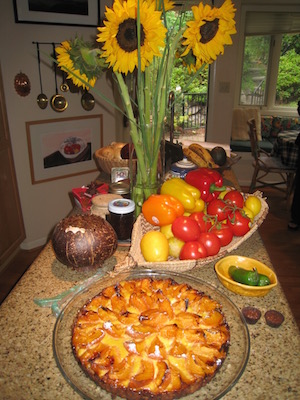
Whether it’s choosing great books and reading them aloud, thinking like a scientist or historian, working out a thorny problem, writing to persuade someone about an important issue, or doing close reading on a great piece of literature, our students want to learn how to do what we’re interested in.
My granddaughters are now 15 and 12, and they are very good cooks and bakers. Over the years, I have taught them how to make great fruit tarts, family Thanksgiving favorites like cranberry relish and stuffing, jams and preserves, and so much more.
They learned the basics and had lots of demonstrations, practice and experience with helpful feedback. They can now confidently make many dishes on their own—even improvising in creative ways to add their own personal touches—without a recipe or script.
 Tarts & Teaching: The Optimal Learning Model
Tarts & Teaching: The Optimal Learning Model
Here’s how we did it and you can do it too. We applied what I call an Optimal Learning Model, that is, providing the learner with just the right kind and amount of support through explicit demonstrations, shared experiences, practice, and guidance so that the learner can successfully complete “the work,” mostly independently. I often call this the I do it–We do it–We do it–You do it model. That is:
- Let me show you how to do it.
- Let’s do it together. First, I’ll take the lead and you join in.
- Next, you take the lead, and I’ll be right by your side. I won’t let you fail.
- Try it out on your own. I’m still close by to support you.
- You’re ready to problem solve and work independently. I’m still available for minimal support.
► Let me show you how to do it.
In teaching and in baking, things are often more complex than they seem. Having a recipe, script, standards document, and/or curriculum is often insufficient for successful implementation. As my neighbor Sylvia said to me after I’d given her my fruit tart recipe over the phone, “I tried it, and I don’t know what I did wrong but it doesn’t look or taste as good as yours.” She asked if she could watch me and, then, if we could make a tart together. And so we did, just as I did with Katie and Brooke.
Very important, they knew what a well-made tart looked like; they’d seen and tasted many. So even though we moved through stages, the teaching was whole to part to whole. Just like in the classroom, expert teachers ensure students know what an excellent completed product looks like (and tastes like) before breaking down the process, step by step.
► Let’s do it together
This shared experiences stage is crucial, and too often not enough time is spent here. With my granddaughters and my neighbor, I initially took the lead in the “we do it.” That is, we did it together, but I shaped the efforts, talking aloud about the “what” and “why” of the doing, and leading the way.
Once I felt confident that they could do more, I turned more responsibility over to them. We still did it together but they took the lead. As a classroom example, in shared reading and shared writing we begin with the teacher’s voice leading the way, but as students become more skilled and confident they take the lead.
After we’d made small fruit tarts together for the first time, Katie and Brooke each tried making a couple of small ones on their own. Everything they needed to be successful was close by, including me who stayed in the kitchen. The message to them was, “You’re ready to do this, and I’m available to help, if needed.”
What’s critical here is that too often in the classroom, we never turn over the responsibility to students, even when they’re ready for it. One example is guided reading, where students are expected to take the lead. Too often, teachers are still supplying words and responses, and students never do become independent readers.
► You’re ready to work independently.
If learners have had sufficient modeling, handholding, practice and guidance – and if they are engaged in work they find meaningful and relevant – they will make the necessary efforts to be successful. With Katie and Brooke and my neighbor, they knew if they had questions I was reachable – in another part of the house, by email, or by phone.
What makes teaching and learning so challenging for our students and us is that too often we’re expected to “just do it.” Whether it’s the latest standards, a new program, or a complicated recipe, successful implementation requires an Optimal Learning Model – slowing down to ensure learners know exactly what to do and how to do it well, and allowing enough guided practice time, including how to change course based on ongoing assessments in the learning process.
 Regie’s Fruit Tart Recipe
Regie’s Fruit Tart Recipe
This is the first time I’ve written down my recipe. Like teaching, the ingredients are approximate but not exact and reflect the many adjustments I’ve made over the years.
Each batch of fruit and each group of students are different. With practice, you’ll get better every time and be able to make improvisations that yield a better result.
- Select the most beautiful ripe fruit you can find. (I mostly rely on local farmer’s markets in Seattle where I live.) With stone fruit, such as peaches, nectarines, and plums, leave skin on and slice fruit evenly and thinly. (You’ll need 1-3 pieces of stone fruit, depending on its size—and you can mix and match. For berries, use about 2 cups.
- Make the crust. Use your favorite pie or tart crust or do what I do: In the food processor, combine 1 cup flour, 1 stick butter, 2 tablespoons sugar, and a pinch of salt. Add just enough freshly squeezed orange juice until dough comes together. Press dough into tart pan and bake until golden at 350 degrees (about 20 min.) If dough puffs up while baking, pat down with clean towel.
- Let tart cool 5-10 minutes, and spread a generous layer of jam or preserves over entire crust. (I mostly use my homemade apricot jam but store bought, if excellent quality, would be fine.) Place one layer of overlapping fruit slices or berries, artfully arranged, on top of jam layer.
- Sprinkle sugar-cinnamon mixture (about 3-4 tablespoons) on top of fruit. Return to oven and bake about 30 min., until crust is browned. Let tart cool, and remove from pan. Serve with whipped cream on the side.
Good luck and enjoy the process. Feel free to comment here if you have questions. Don’t worry if your result is not perfect. Your recipients—and your students—will appreciate your efforts on their behalf. And you will get better and better!
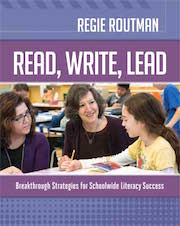
Regie’s current work involves week-long school residencies where she demonstrates effective reading and writing practices in diverse classrooms, coaches teachers and principals, and facilitates ongoing professional conversations, all as a catalyst for sustainable, whole-school change. Visit her website.

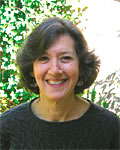
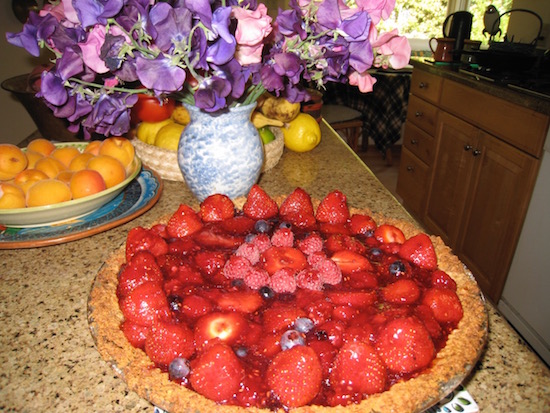
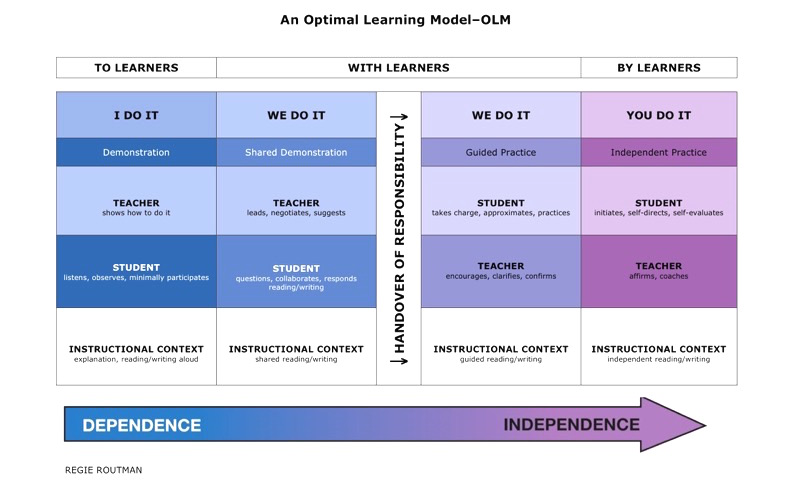
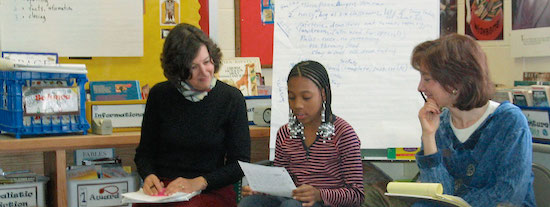
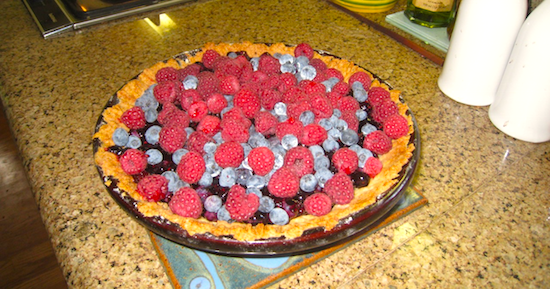


































I don’t think we can read about great instruction enough. Thank you Regie, for creating this analogy between the Optimal Learning Model and making fruit tarts. We do develop fluency as we become an expert, but it is always wise to come back to the foundation of our work. In an educational world focused on outcomes, I appreciate the reminder about focusing on and enjoying the process of teaching and learning.
This was fabulous! Not only were we reminded of good teaching practices, but we got a recipe as well! Now, I want to bake with you and teach with you! Thank you once again for your wisdom!